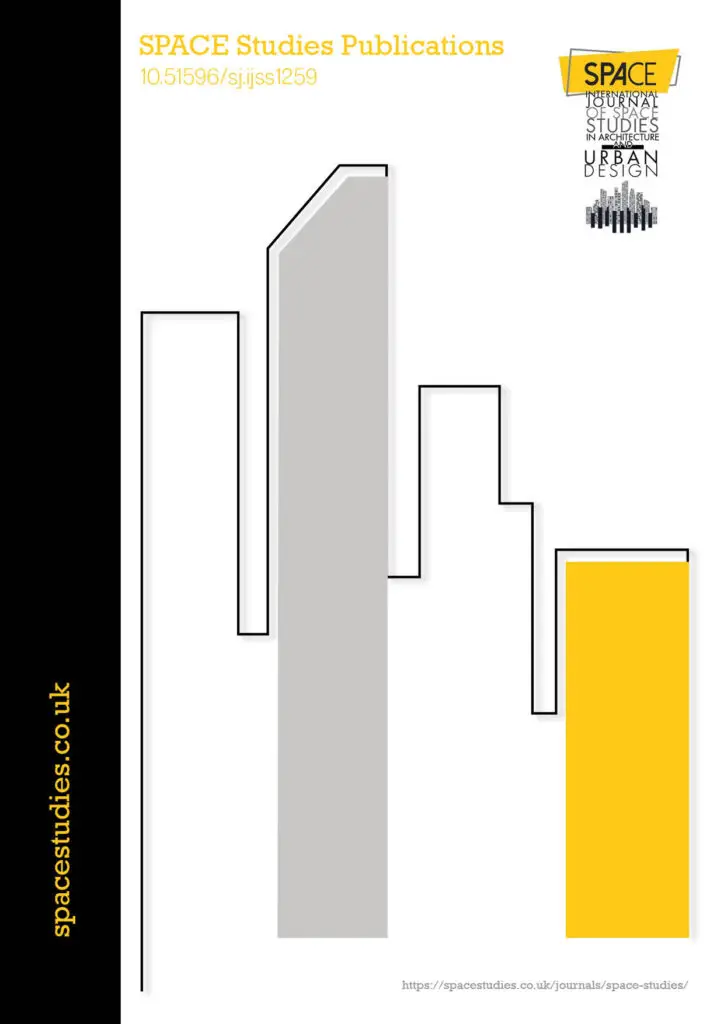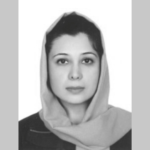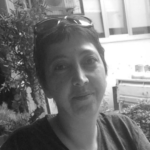
| Author | Institution |
|---|---|
| Elif Guldu | Akdeniz University, Institute of Natural and Applied Sciences, Program of Remote Sensing and GIS, Antalya, Turkey |
| Cagdas Kuscu Simsek | Akdeniz University, Faculty of Science, Department of Space Sciences and Technology, Antalya, Turkey |
In this study, cool island (CI) potentials as urban parks and green spaces of Antalya where it is in the Mediterranean climate belt were investigated by handling together with their peripheries’ urban morphology. Surface temperature data were obtained by remote sensing methods using Landsat 8 satellite images. In the study where the GIS techniques were used, the relationships between the cool islands and their surrounding urban texture were analyzed by statistical methods. The results indicate that while the density of adult trees in urban green spaces increases the cooling capacities and cooling distances of green spaces, the morphological characteristics of the peripheries of green spaces change their cooling distances. It is thought that these findings are constituted an important basis for the development of the climate-sensitive urban planning and urban design approach.
£35.00 per Month.
Student priced discounts on conference registrations, SPACE shop and e-journals. Access to members only areas on the website. Proof of student eligibility required.
Access to Journal subscription.
Aram, F., García, E. H., Solgi, E., & Mansournia, S. (2019). Urban green space cooling effect in cities. Heliyon, 5(4), e01339. https://doi.org/10.1016/j.heliyon.2019.e01339
Aygün, A., & Torlak, S.E. Denizli İli’nin İklim Değişikliğine Karşı Dayanıklılığının İncelenmesi (An Examinat, on Climate Change Resilience on Denizli). Niğde Ömer Halisdemir Üniversitesi Mühendislik Bilimleri Dergisi, 9(1), 648-664. https://doi.org/10.28948/ngumuh.629809
Barriopedro, D., Fischer, E. M., Luterbacher, J., Trigo, R. M., & García-Herrera, R. (2011). The hot summer of 2010: redrawing the temperature record map of Europe. Science, 332(6026), 220-224. DOI: 10.1126/science.1201224
Bernard, J., Rodler, A., Morille, B., & Zhang, X. (2018). How to design a park and its surrounding urban morphology to optimize the spreading of cool air?. Climate, 6(1), 10. https://doi.org/10.3390/cli6010010
Byrne, J., & Jinjun, Y. (2009). Can urban greenspace combat climate change? Towards a subtropical cities research agenda. Australian Planner, 46(4), 36-43. https://doi.org/10.1080/07293682.2009.10753420
Cao, X., Onishi, A., Chen, J., & Imura, H. (2010). Quantifying the cool island intensity of urban parks using ASTER and IKONOS data. Landscape and urban planning, 96(4), 224-231. https://doi.org/10.1016/j.landurbplan.2010.03.008
Carvalho, D., Martins, H., Marta-Almeida, M., Rocha, A., & Borrego, C. J. U. C. (2017). Urban resilience to future urban heat waves under a climate change scenario: A case study for Porto urban area (Portugal). Urban Climate, 19, 1-27. https://doi.org/10.1016/j.uclim.2016.11.005
ÇINAR, H. S., & ERDOĞAN, R. (2019). Geleneksel bahçe ve mimari üslubun ortaya çıkışında doğal faktörlerin rolü: İran örneği (The Role of Natural Factors in the Emergence of Traditional Garden and Architectural Style: The Case of Iran). Bartın Orman Fakültesi Dergisi, 21(3), 685-699. https://doi.org/10.24011/barofd.583185
Du, H., Cai, W., Xu, Y., Wang, Z., Wang, Y., & Cai, Y. (2017). Quantifying the cool island effects of urban green spaces using remote sensing Data. Urban Forestry & Urban Greening, 27, 24-31. https://doi.org/10.1016/j.ufug.2017.06.008
Doick, K. J., Peace, A., & Hutchings, T. R. (2014). The role of one large greenspace in mitigating London’s nocturnal urban heat island. Science of the total environment, 493, 662-671. https://doi.org/10.1016/j.scitotenv.2014.06.048
Ellison, D., Morris, C. E., Locatelli, B., Sheil, D., Cohen, J., Murdiyarso, D., … & Sullivan, C. A. (2017). Trees, forests and water: Cool insights for a hot world. Global Environmental Change, 43, 51-61. https://doi.org/10.1016/j.gloenvcha.2017.01.002
Feyisa, G. L., Dons, K., & Meilby, H. (2014). Efficiency of parks in mitigating urban heat island effect: An example from Addis Ababa. Landscape and urban planning, 123, 87-95. https://doi.org/10.1016/j.landurbplan.2013.12.008
Gargiulo, C., Tulisi, A., & Zucaro, F. (2016). Small green areas for energy saving: effects on different urban settlements. http://doi.org/10.5821/ace.11.32.4659
Grilo, F.; Pinho, P.; Aleixo, C.; Catita, C.; Silva, P.; Lopes, N.; Freitas, C.; Santos-Reis, M.; McPhearson, T.; Branquinho, C. (2020). Using green to cool the grey: Modelling the cooling effect of green spaces with a high spatial resolution. Science of The Total Environment, 724, 138182, https://doi.org/10.1016/j.scitotenv.2020.138182
Hamada, S., & Ohta, T. (2010). Seasonal variations in the cooling effect of urban green areas on surrounding urban areas. Urban forestry & urban greening, 9(1), 15-24. https://doi.org/10.1016/j.ufug.2009.10.002
Honjo, T., & Takakura, T. (1990). Simulation of thermal effects of urban green areas on their surrounding areas. Energy and buildings, 15(3-4), 443-446. https://doi.org/10.1016/0378-7788(90)90019-F
Jaganmohan, M.; Knapp, S.; Buchmann, C.M.; Schwarz, N. (2016). The Bigger, the Better? The Influence of Urban Green Space Design on Cooling Effects for Residential Areas. Journal of Environment Quality, 45(1), 134-145. https://doi.org/10.2134/jeq2015.01.0062
Jáuregui, E. (1990). Influence of a large urban park on temperature and convective precipitation in a tropical city. Energy and buildings, 15(3-4), 457-463. https://doi.org/10.1016/0378-7788(90)90021-A
Jiménez-Muñoz, J. C., Cristóbal, J., Sobrino, J. A., Sòria, G., Ninyerola, M., & Pons, X. (2008). Revision of the single-channel algorithm for land surface temperature retrieval from Landsat thermal-infrared data. IEEE Transactions on geoscience and remote sensing, 47(1), 339-349. https://doi.org/10.1109/TGRS.2008.2007125
Kuşçu Şimşek, Ç., (2020). İstanbul’un mezo ve mikro iklimsel değişiminin kuzey ormanları ve kent içi yeşil alanlarla ilişkisi (The Relationship of Istanbul’s Meso and Microclimatic Change with Northern Forests and Urban Green Areas) Şu esrede: Ünal Akkemik (Ed.). Ekosistem, İklim ve Kentsel Büyüme Perspektifinden İstanbul ve Kuzey Ormanları. Türkiye Ormancılar Derneği Tayın No:
50, Marmara Şubesi Yayın No:4, İstanbul. ISBN: 978-975-93478-7-1. S:96-109.
MacDonald, J., (2007). How Cities Use Parks for Climate Change Management. American Planning Association (APA), Washington. https://www.planning.org/publications/document/9148693/ Date of access: 10.05.2021
Masoudi, M., & Tan, P. Y. (2019). Multi-year comparison of the effects of spatial pattern of urban green spaces on urban land surface temperature. Landscape and Urban Planning, 184, 44-58. https://doi.org/10.1016/j.landurbplan.2018.10.023
Masuda, Y., Ikeda, N., Seno, T., Takahashi, N., & Ojima, T. (2005). A basic study on utilization of the cooling effect of sea breeze in waterfront areas along Tokyo Bay. Journal of Asian Architecture and Building Engineering, 4(2), 483-487. https://doi.org/10.3130/jaabe.4.483
Matzarakis, A., Rutz, F., Chen, Y., Fröhlich, D. (2017). RayMan Pro, A Tool for Applied Climatology, Rayman Manual Version 0.1. https://www.urbanclimate.net/rayman/RayManManual.pdf
McCarthy, M. P., Best, M. J., & Betts, R. A. (2010). Climate change in cities due to global warming and urban effects. Geophysical research letters, 37(9). https://doi.org/10.1029/2010GL042845
Moss, J. L., Doick, K. J., Smith, S., & Shahrestani, M. (2019). Influence of evaporative cooling by urban forests on cooling demand in cities. Urban Forestry & Urban Greening, 37, 65-73. https://doi.org/10.1016/j.ufug.2018.07.023
Naeem, S., Cao, C., Qazi, W. A., Zamani, M., Wei, C., Acharya, B. K., & Rehman, A. U. (2018). Studying the association between green space characteristics and land surface temperature for sustainable urban environments: An analysis of Beijing and Islamabad. ISPRS International Journal of Geo-Information, 7(2), 38. https://doi.org/10.3390/ijgi7020038
Newman, P. (2020). Cool planning: How urban planning can mainstream responses to climate change. Cities, 103, 102651. https://doi.org/10.1016/j.cities.2020.102651
Otto, F. E., Massey, N., van Oldenborgh, G. J., Jones, R. G., & Allen, M. R. (2012). Reconciling two approaches to attribution of the 2010 Russian heat wave. Geophysical Research Letters, 39(4). https://doi.org/10.1029/2011GL050422
OVALI, P. K. BİYOKLİMATİK TASARIM MATRİSİ (TÜRKİYE) (BIOCLIMATIC DESIGN MATRIX (TURKEY)). Trakya Üniversitesi Mühendislik Bilimleri Dergisi, 20(2), 51-66.
Qiu, K., & Jia, B. (2020). The roles of landscape both inside the park and the surroundings in park cooling effect. Sustainable Cities and Society, 52, 101864. https://doi.org/10.1016/j.scs.2019.101864
Rall, L., Niemela, J., Pauleit, S., Pintar, M., Lafortezza, R., Santos, A., … & Železnikar, Š. (2015). A typology of urban green spaces, eco-system services provisioning services and demands. Report D3, 1.
Ren, Z., He, X., Pu, R., & Zheng, H. (2018). The impact of urban forest structure and its spatial location on urban cool island intensity. Urban Ecosystems, 21(5), 863-874. https://doi.org/10.1007/s11252-018-0776-4
Robine, J. M., Cheung, S. L. K., Le Roy, S., Van Oyen, H., Griffiths, C., Michel, J. P., & Herrmann, F. R. (2008). Death toll exceeded 70,000 in Europe during the summer of 2003. Comptes rendus biologies, 331(2), 171-178. https://doi.org/10.1016/j.crvi.2007.12.001
Sharifi, A. (2021). Co-benefits and synergies between urban climate change mitigation and adaptation measures: A literature review. Science of The Total Environment, 750, 141642, https://doi.org/10.1016/j.scitotenv.2020.141642
Shih, W. Y., Ahmad, S., Chen, Y. C., Lin, T. P., & Mabon, L. (2020). Spatial relationship between land development pattern and intra-urban thermal variations in Taipei. Sustainable Cities and Society, 62, 102415. https://doi.org/10.1016/j.scs.2020.102415
Sobrino, J. A., Jiménez-Muñoz, J. C., Sòria, G., Romaguera, M., Guanter, L., Moreno, J., … & Martínez, P. (2008). Land surface emissivity retrieval from different VNIR and TIR sensors. IEEE transactions on geoscience and remote sensing, 46(2), 316-327. https://doi.org/10.1109/TGRS.2007.904834
Stewart, I. D., & Oke, T. R. (2012). Local climate zones for urban temperature studies. Bulletin of the American Meteorological Society, 93(12), 1879-1900. https://doi.org/10.1175/BAMS-D-11-00019.1
TUNÇALP, K., SUCU, M., & OĞUZ, Y. (2002). Değişik İklim Şartlarında Bina İçerisinde Pasif Isıtma Ve Soğutma Sistemlerinin Kullanılabilirliği (Usability of Passive Heating and Cooling Systems in Buildings in Different Climate Conditions). Marmara Üniversitesi Teknik Eğitim Fakültesi Elektrik Eğitimi Bölümü Göztepe-İstanbul. TÜRKİYE. pg, 2(3), 4.
USGS, 2019. Landsat 8 (L8) Data Users Handbook. https://prd-wret.s3.us-west-2.amazonaws.com/assets/palladium/production/atoms/files/LSDS-1574_L8_Data_Users_Handbook-v5.0.pdf.
Wu, Z., & Zhang, Y. (2019). Water bodies’ cooling effects on urban land daytime surface temperature: Ecosystem service reducing heat island effect. Sustainability, 11(3), 787. https://doi.org/10.3390/su11030787
Xue, Z., Hou, G., Zhang, Z., Lyu, X., Jiang, M., Zou, Y., … & Liu, X. (2019). Quantifying the cooling-effects of urban and peri-urban wetlands using remote sensing data: Case study of cities of Northeast China. Landscape and Urban Planning, 182, 92-100. https://doi.org/10.1016/j.landurbplan.2018.10.015
Yu, C., & Hien, W. N. (2006). Thermal benefits of city parks. Energy and buildings, 38(2), 105-120. https://doi.org/10.1016/j.enbuild.2005.04.003
Yu, Z., Yang, G., Zuo, S., Jørgensen, G., Koga, M., & Vejre, H. (2020). Critical review on the cooling effect of urban blue-green space: A threshold-size perspective. Urban Forestry & Urban Greening, 49, 126630. https://doi.org/10.1016/j.ufug.2020.126630
Sign in to continue
Not a member yet? Sign up now

Administrative Assistant
Deniz Bol is the Administrative Assistant at SPACE Studies, where she supports the day-to-day operations and contributes to the smooth functioning of the organization. Alongside her administrative role, Deniz is an artist with a passion for creative expression. She is currently pursuing her studies at the University of the Arts London (UAL), where she continues to develop her artistic practice. Her organizational skills, paired with her artistic background, make her a valuable asset to the SPACE Studies team, helping bridge the worlds of administration and creativity.
E-mail: denizbol@spacestudies.co.uk

Digital Marketing Consultant
Murat Oktay is the Digital Marketing Consultant at SPACE Studies, where he provides strategic guidance to enhance our digital presence and community engagement. With a keen eye for digital marketing trends and best practices, Murat plays a key role in refining our content strategy, expanding our online reach, and connecting with a wider audience. His expertise in digital tools and innovative marketing techniques aligns with SPACE Studies’ mission as a social enterprise, ensuring that our campaigns are impactful and resonate with our commitment to social responsibility in architecture and design. Outside his work with SPACE Studies, Murat stays at the forefront of digital marketing advancements, continually exploring new tools and sharing his insights with peers.
E-mail: muratoktay@spacestudies.co.uk

Marketing Manager
Santa Noella Matabaro is the Marketing Manager of SPACE Studies, bringing her expertise in strategic planning, community engagement, and relationship-building to the organization’s mission as a social enterprise. With a background in Politics & Law from the University of Kent, Santa combines analytical insights with a creative approach to advancing SPACE Studies’ vision of fostering interdisciplinary dialogue in architecture, design, and urban planning. In her role, she develops targeted campaigns and strategic partnerships, building brand presence and fostering meaningful connections with the community. Santa’s collaborative and people-centered approach enhances SPACE Studies’ impact, aligning with its commitment to social responsibility and innovation in the built environment.

Academic Content Coordinator
Betul Uckan is an architect and dedicated academic with a background in both architectural practice and research. She holds a Master of Science in Architectural Design and a Bachelor’s degree in Architecture from Istanbul Technical University, where she cultivated her interests in architectural theory and design. Betul has gained experience as a research assistant in various universities, contributing to design studios and foundational courses. She has also worked in the field as an architect with projects focused on design, modeling, and construction, and has been involved in notable projects, including Maltepe Piazza and Emaar Square in Istanbul. With her expertise spanning both digital and material architecture, Betul brings a dynamic, interdisciplinary approach to her role as the Academic Programme Coordinator.
E-mail: betuluckan@spacestudies.co.uk

Senior Researcher & Managing Editor
Arghavan Pournaderi is a senior researcher in the field of architectural conservation and restoration, with an academic foundation in architecture and specialized expertise in historic sites and buildings. Completing her PhD at the Art University of Isfahan, Iran, in 2019, her research has contributed to the understanding of Iran’s architectural heritage, with a focus on Isfahan’s urban and architectural evolution during the Safavid period. In addition to her extensive research, Dr. Pournaderi has held academic positions at various institutions in Isfahan, teaching at both undergraduate and graduate levels. Her work extends beyond academia as she contributes to SPACE Studies as Senior Researcher & Managing Editor, where she oversees scholarly initiatives that foster deeper interdisciplinary dialogue in architecture and heritage conservation.

Senior Researcher & Educational Consultant
Gregory Cowan is a Senior Researcher and Educational Consultant at SPACE Studies, where he leads initiatives that bridge academic research and practical application in architecture and urban design. He contributes his extensive experience to mentoring postgraduate students, designing educational workshops, and guiding community-focused projects. Gregory is also a freelance academic at the University of Wales Trinity St David and the University of Westminster, and founder of The Architects Coach. His expertise spans architectural workspace analysis, professional development, and positive intelligence coaching.
E-mail: gregorycowan@spacestudies.co.uk

Senior Researcher
Alison Hand is a Senior Researcher at SPACE Studies. She is a painter and writer with an MA in Painting from the Royal College of Art. Alison’s work focuses on creating absurd, unstable heterotopic spaces and dialogues with painting history. She is currently the Artist in Residence for King’s College London Philosophy Department on the Dreams and Wakeful Consciousness Research Project, exploring themes of time and simultaneity in new work. Alison has received numerous awards for her painting and is currently working with Bloomsbury Publishers on a major essay on Drawing in Contemporary Art. She is also the BA Fine Art Programme Leader at Art Academy London and co-director of Cement Arts. Her role at SPACE Studies involves leading research projects, mentoring junior researchers, and contributing to our artistic and academic initiatives.
E-mail: alisonhand@spacestudies.co.uk

Senior Researcher
Julian Wild is a Senior Researcher at SPACE Studies and the Sculpture Program Leader at The Art Academy London. With over 30 years of experience in creating and exhibiting sculptures, Julian has worked with high-profile clients such as Cate Blanchett and the University of Oxford. A fellow and former vice president (2015-2019) of the Royal Society of Sculptors, his work has been featured at venues like Modern Art Oxford and Chatsworth House. At SPACE Studies, Julian leads research projects, mentors junior team members, and conducts workshops that blend art and urban studies. In his free time, he enjoys attending academic conferences and crafting new sculptures.
E-mail: julianwild@spacestudies.co.uk

Director of Publications & Senior Researcher
Elif Suyuk Makakli (Associative Professor) earned her PhD in Architecture from the Vienna University of Technology, where she studied the impact of technology on architecture under Prof. William Alsop. With extensive experience in architectural practice in Istanbul and Vienna, she is now an Associate Professor at FMV Isik University, focusing on design education and technology. At SPACE Studies, Elif serves as both the Head of Publications and Senior Researcher, guiding scholarly content and contributing to research initiatives. She is dedicated to mentoring and fostering design innovation.
E-mail: elifsmakakli@spacestudies.co.uk

Director of Research
Sanaz Shobeiri is an architect, urban designer, and landscape urbanist, currently a postdoctoral researcher in the Department of Planning at Queen’s University Belfast. Her research focuses on age-gender inclusiveness and the interplay of architectural, historical, political, and sociocultural dimensions in urban spaces, exemplified by her project on city centres in Belfast and Tehran. Sanaz holds a PhD in Urban Planning from the University of Tehran and has a robust portfolio in sustainability and urban theory. As Head of Research at SPACE Studies, she leads innovative research initiatives, fostering collaboration and academic excellence. In her free time, Sanaz enjoys exploring urban landscapes and supporting community development.
E-mail: sanazshobeiri@spacestudies.co.uk

Creative Director
Selin Gulce Sozmen is the Creative Director at SPACE Studies, where she leads the artistic vision and design strategy for the organisation. With a background in graphic design and visual arts, Selin has been instrumental in creating visually captivating books, journals, and event posters. Her role extends to developing and coordinating workshops and creative projects, ensuring that all visual materials meet the highest standards of quality and innovation. Selin’s dedication to creativity and excellence drives the visual and creative direction of SPACE Studies, making her an essential part of the team.
E-mail: selinsozmen@spacestudies.co.uk

Founder & Executive Director
Pinar Engincan is the Founder and Executive Director of SPACE Studies, an innovative social enterprise focused on fostering interdisciplinary dialogue and education in architecture and urban design. With extensive experience as a lecturer and researcher, Pınar holds a PhD in Architecture and has led numerous academic initiatives. Her career includes curriculum development, international collaborations, and research on housing and urban policies. Passionate about bridging academia and community, she champions accessible education and consultancy services, empowering individuals to shape the built environment.
E-mail: pengincan@spacestudies.co.uk